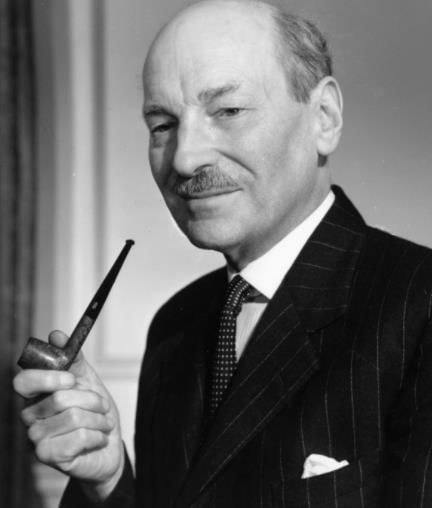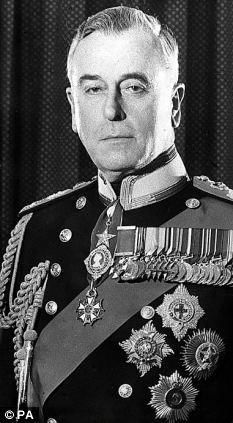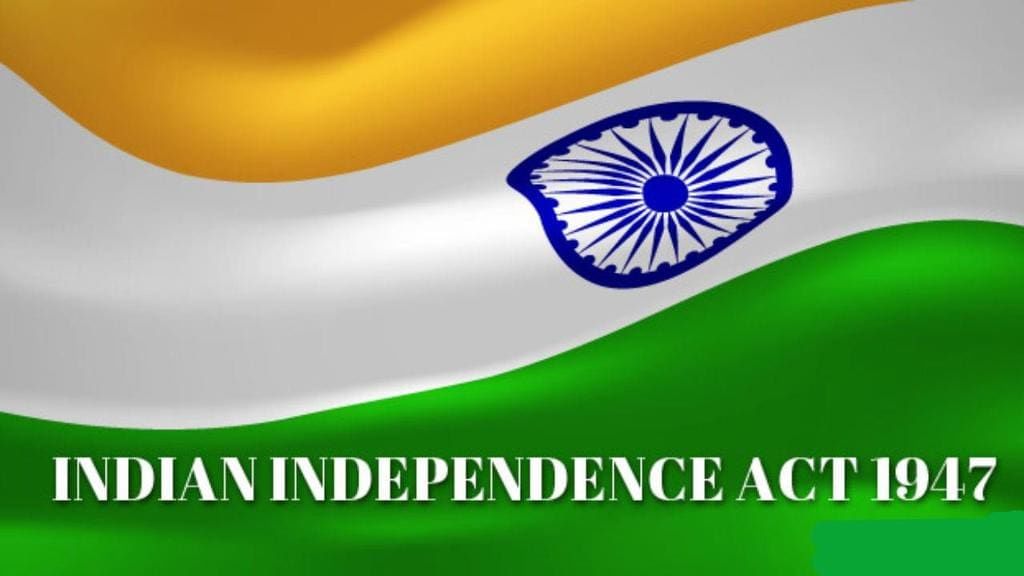UPSC Exam > UPSC Notes > History for UPSC CSE > Spectrum Summary: Independence with Partition
Spectrum Summary: Independence with Partition | History for UPSC CSE PDF Download
Attlee’s Statement of February 20, 1947
Clement Attlee, the British prime minister, sensing the trouble all around, made an announcement on February 20, 1947. The British House of Commons declared the British intention of leaving the Indian subcontinent. Clement Attlee
Clement Attlee
➢ Main Points of Attlee’s Statement
- The deadline of June 30, 1948, was fixed for transfer of power even if the Indian politicians had not agreed by that time on the constitution.
- British would relinquish power either to some form of central government or in some areas to the existing provincial governments if the constituent assembly was not fully representative, i.e., if the Muslim majority provinces did not join.
- British powers and obligations vis-a-vis the princely states would lapse with the transfer of power, but these would not be transferred to any successor government in British India.
- Mountbatten would replace Wavell as the viceroy. The statement contained clear hints of partition and even Balkanisation of the country into numerous states and was, in essence, a reversion of the Cripps Offer.
➢ Why a Date Fixed by Government for Withdrawal
- The government hoped that a fixed date would shock the parties into an agreement on the main question.
- The government was keen to avert the developing constitutional crisis.
- The government hoped to convince the Indians of British sincerity.
- Truth in WavelTs assessment could no longer be denied.
➢ Congress Stand
- Provision of transfer of power to more than one center was acceptable to Congress because it meant that the existing assembly could go ahead and frame a constitution for the areas represented by it, and it offered a way out of the existing deadlock.
➢ Independence and Partition
- On March 10, 1947, Nehru stated that the Cabinet Mission was the best solution if carried out; the only real alternative was the partition of Punjab and Bengal. In April 1947, the Congress president, Kripalani, communicated to the viceroy
- Mountbatten as the Viceroy, Mountbatten proved more firm and quick in taking decisions than his predecessors because he was informally given more powers to decide things on the spot. His task was to explore the options of unity and division till October 1947 and then advise the British government on the form of transfer of power.
 Louis Mountbatten
Louis Mountbatten
➢ Mountbatten Plan, June 3,1947
- Punjab and Bengal Legislative Assemblies would meet in two groups, Hindus and Muslims, to vote for partition. If a simple majority of either group voted for partition, then these provinces would be partitioned.
- In the case of partition, two dominions and two constituent assemblies would be created.
- Sindh would take its own decision.
- Referendums in NWFP and the Sylhet district of Bengal would decide the fate of these areas.
- Since the Congress had conceded a unified India, all their other points would be met, namely,
(i) Independence for princely states ruled out—they would join either India or Pakistan;
(ii) Independence for Bengal ruled out;
the accession of Hyderabad to Pakistan ruled out;
(iii) freedom to come on August 15, 1947; and
(iv) A boundary commission to be set up if the partition was to be effected.
➢ Why Congress Accepted Dominion Status
- It would ensure a peaceful and quick transfer of power;
- It was more important for Congress to assume the authority to check the explosive situation; and
- Would allow for some much-needed continuity in the bureaucracy and the army.
➢ The rationale for an Early Date (August 15, 1947)
- The plan was put into effect without the slightest delay. The legislative assemblies of Bengal and Punjab decided in favor of the partition of these two provinces.
- Thus, East Bengal and West Punjab joined Pakistan; West Bengal and East Punjab remained with the Indian Union.
➢ Indian Independence Act
- On July 5, 1947, the British Parliament passed the Indian Independence Act which was based on the Mountbatten Plan, and the Act got royal assent on June 18, 1947.
- The act was implemented on August 15, 1947.
- Act provided for the creation of two independent dominions of India and Pakistan with effect from August 15, 1947.
- As per the provisions of the Indian Independence Act, 1947, Pakistan became independent on August 14 while India got its freedom on August 15, 1947.
- Jinnah became the first Governor-General of Pakistan.
- India, however, decided to request Lord Mountbatten to continue as the Governor-General of India.
➢ Problems of Early withdrawal
- The breakneck speed of events under Mountbatten caused anomalies in arranging the details of partition and totally failed to prevent the Punjab massacre, because
- there were no transitional institutional structures within which partition problems could be tackled;
- Mountbatten had hoped to be the common Governor-General of India and Pakistan, thus providing the necessary link, but Jinnah wanted the position for himself in Pakistan;
- There was a delay in announcing the Boundary Commission Award (under Radcliffe); though the award was ready by August 12, 1947, Mountbatten decided to make it public after August 15 so that the British could escape all responsibility of disturbances.
➢ Integration of States
- In July 1947, Vallabhbhai Patel took charge of the new States Department. Under Patel, the incorporation of Indian states took place in two phases with a skillful combination of baits and threats of mass pressure in both.
- Phase I By August 15, 1947, all states except Kashmir, Hyderabad, and Junagarh had signed an instrument of accession with the Indian government
- Phase II the second phase involved a much more difficult process of "integration' of states with neighboring provinces or into new units
Inevitability of Partition
➢ Why Congress Accepted Partition
- Congress was only accepting the inevitable due to the long-term failure to draw the Muslim masses into the national movement. Congress had a two-fold task—(i) structuring diverse classes, communities, groups, and regions into a nation, and (ii) securing independence for this nation.
- Only an immediate transfer of power could forestall the spread of direct action" and communal violence. The virtual collapse of the Interim Government also made the notion of Pakistan appear unavoidable.
- The partition plan ruled out independence for the princely states which could have been a greater danger to Indian unity as it would have meant Balkanisation of the country.
- Acceptance of partition was only a final act of the process of step-by-step concessions to the League's championing of a separate Muslim state.
- When the CWC resolution stated that Punjab (and by implication, Bengal) must be partitioned if the country was divided and With the 3rd June Plan, Congress accepted partition.
- While loudly asserting the sovereignty of the Constituent Assembly, the Congress quietly accepted compulsory grouping and accepted the partition most of all because it could not stop the communal riots.
➢ Gandhi's Helplessness
- Gandhi felt helpless because there had been a communalization of the people. He had no option but to accept partition because the people wanted it.
The document Spectrum Summary: Independence with Partition | History for UPSC CSE is a part of the UPSC Course History for UPSC CSE.
All you need of UPSC at this link: UPSC
|
216 videos|855 docs|219 tests
|
FAQs on Spectrum Summary: Independence with Partition - History for UPSC CSE
| 1. What is the significance of Attlee's Statement of February 20, 1947? |  |
Ans. Attlee's Statement of February 20, 1947 is significant because it acknowledged the inevitability of partition in India, which eventually led to the creation of two separate nations - India and Pakistan.
| 2. What is the main idea of the article "Independence with Partition"? |  |
Ans. The main idea of the article "Independence with Partition" is to summarize the events and factors that led to the partition of India and the creation of India and Pakistan as separate countries.
| 3. What were the reasons behind the partition of India according to the article? |  |
Ans. The article states that the partition of India was inevitable due to various reasons such as religious differences between Hindus and Muslims, conflicting political interests, and the inability to find a unified solution that would satisfy both communities.
| 4. How did Attlee's statement contribute to the partition of India? |  |
Ans. Attlee's statement of February 20, 1947 acknowledged the reality of the partition and provided a clear signal that the British government was willing to support the division of India. This statement further fueled the demand for a separate Muslim state, leading to the eventual partition of India.
| 5. What were the implications of the partition of India? |  |
Ans. The partition of India had significant implications, including widespread violence, migration of millions of people, and the loss of lives and properties. It also resulted in the establishment of Pakistan as a separate country for Muslims and India as a predominantly Hindu nation. The partition deeply affected the social, political, and cultural fabric of the region.
Related Searches






















